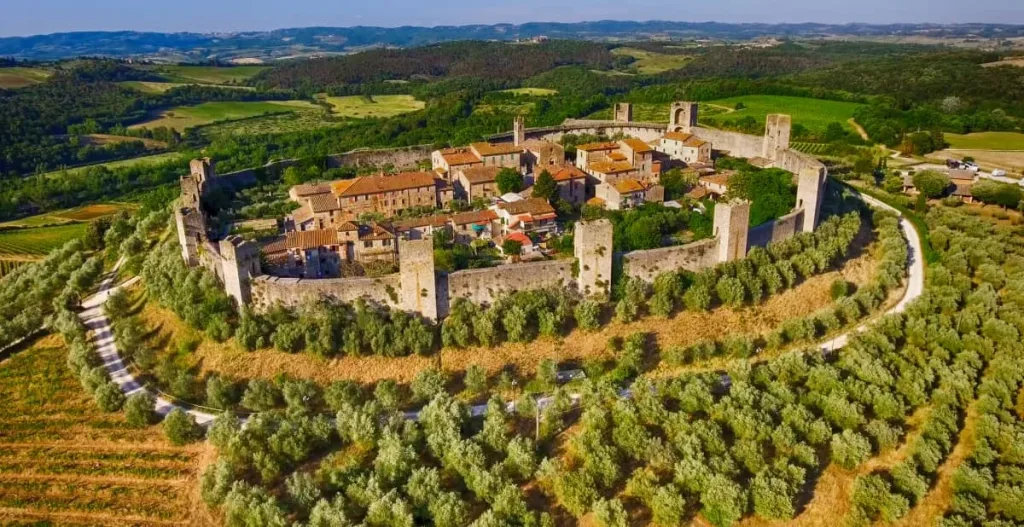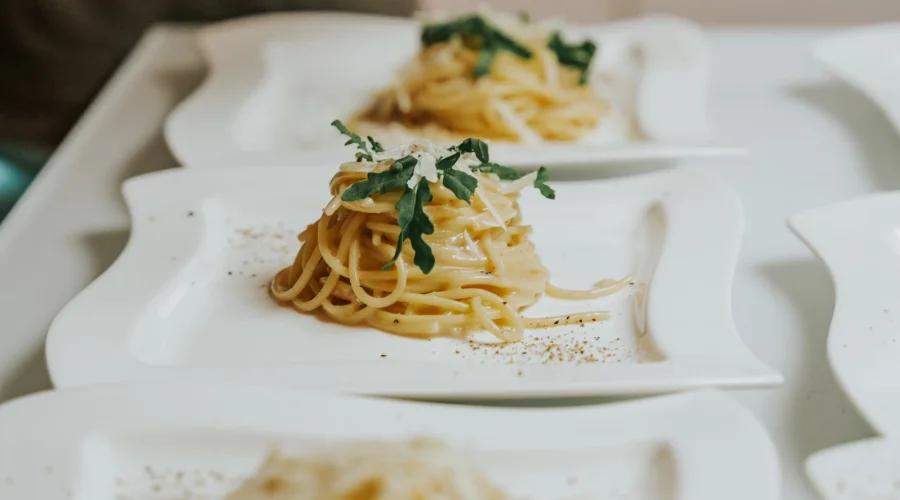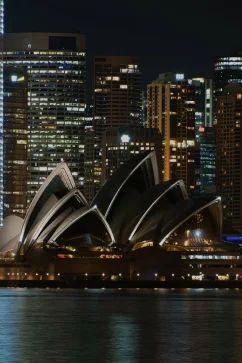Following the Via Francigena Through the Landscapes and Gastronomy of its Italian Stretch

The Via Francigena, an ancient pilgrimage route stretching from Canterbury, England, to Rome, Italy, is a journey that beckons travelers to step back in time and experience the rich history, stunning landscapes, and delectable gastronomy of its Italian leg. As pilgrims and modern-day explorers alike trace this historical path, they embark on an unforgettable voyage through Italy’s diverse regions, each offering its own unique blend of culture, cuisine, and natural beauty.
The Via Francigena, an ancient pilgrimage route dating back to the Middle Ages, winds its way through the picturesque landscapes of Italy, offering travelers a unique journey filled with history, culture, and, of course, delectable Italian cuisine. Stretching from Canterbury, England, to Rome, Italy, the Via Francigena has long been a path for religious pilgrims, traders, and wayfarers. Today, it beckons to modern travelers seeking adventure and a taste of Italy’s diverse regions.
A Path of Pilgrimage and Discovery
Originally established in the 9th century by Archbishop Sigeric the Serious, who documented his journey to Rome, the Via Francigena has long been a cherished route for those seeking spiritual enlightenment. Today, it serves as a route for both pilgrims and tourists, inviting them to explore Italy’s remarkable heritage. The Via Francigena, also known as the “Frankish Way,” was first documented by the Archbishop of Canterbury, Sigeric the Serious, who recorded his journey to Rome in the 10th century. His itinerary has served as a guide for countless pilgrims over the centuries. The route’s historical and spiritual significance is evident as you traverse ancient bridges, medieval villages, and sacred sites.
The Tuscan Charm
One of the most iconic stretches of the Via Francigena is its journey through Tuscany. This region’s rolling hills, vineyards, and picturesque towns provide a quintessential Italian experience. Pilgrims will find themselves passing through places like San Gimignano, known for its medieval towers, and Siena, famous for its stunning cathedral and historic Piazza del Campo.
Tuscan cuisine is renowned worldwide, and pilgrims can savor delicious dishes like ribollita (a hearty vegetable soup), pappa al pomodoro (tomato and bread soup), and local wines such as Chianti and Brunello di Montalcino. One of the most iconic stretches of the Via Francigena lies in Tuscany, a region renowned for its rolling hills, vineyards, and charming villages. As you hike or cycle through this picturesque countryside, you’ll be captivated by the serene beauty that has inspired artists and writers for generations. Tuscany’s postcard-perfect landscapes invite you to slow down, breathe in the fresh air, and savor the moment.

The Lure of Lazio
As the Via Francigena continues its journey into Lazio, pilgrims will encounter the enchanting city of Viterbo, famous for its well-preserved medieval district and thermal baths. The cuisine here is influenced by both Roman and Tuscan traditions, offering a delightful blend of flavors. Tuscany’s cuisine is a vital part of the journey. From indulging in hearty ribollita (a Tuscan bread and vegetable soup) to sipping on Chianti wine, you’ll have the opportunity to sample the region’s culinary delights. Don’t forget to try the famous bistecca alla fiorentina, a mouthwatering Florentine steak, which pairs perfectly with a glass of Sangiovese.
Embracing Rome
The climax of the Via Francigena pilgrimage is the eternal city of Rome, where St. Peter’s Basilica and the Vatican await. Pilgrims arriving in Rome not only experience the culmination of their spiritual journey but also have the opportunity to indulge in the city’s famous cuisine. Roman dishes like cacio e pepe (cheese and pepper pasta) and supplì (fried rice balls with mozzarella) are must-try treats. The Via Francigena also passes through Lazio, home to Italy’s capital, Rome. This region is steeped in history, and you can explore ancient Roman ruins, medieval towns, and Renaissance palaces. Strolling through the historic center of Rome is a journey back in time, with iconic landmarks like the Colosseum, Roman Forum, and the Vatican waiting to be discovered.
Rome offers a different culinary experience compared to Tuscany. You can savor authentic Roman dishes like cacio e pepe (pasta with cheese and pepper), supplì (fried rice balls), and, of course, traditional Roman-style pizza. For dessert, enjoy a creamy gelato while you wander through Rome’s charming streets.

The Importance of Gastronomy
The gastronomy along the Via Francigena is more than just sustenance; it’s an integral part of the pilgrimage experience. As travelers traverse the diverse Italian regions, they have the chance to taste authentic local flavors, often prepared with age-old recipes and techniques passed down through generations. Sharing meals with locals and fellow pilgrims becomes a cultural exchange, where stories are shared, friendships are forged, and traditions are passed on.
A Journey of Self-Discovery
Walking the Via Francigena is not just a physical journey; it’s a voyage of self-discovery. Pilgrims and travelers alike are invited to reflect, find inner peace, and connect with the rich history and culture of Italy. The landscapes and gastronomy encountered along the way are essential elements of this transformative experience. The Via Francigena through Italy is a testament to the enduring appeal of pilgrimage routes, offering a deeper understanding of the human spirit and a profound connection to the past. As travelers follow this ancient path, they not only explore Italy’s breathtaking landscapes and savor its delicious cuisine but also embark on a personal journey of exploration, discovery, and enlightenment that leaves an indelible mark on the soul.
The Via Francigena provides an opportunity to embark on a unique journey through Italy, exploring its diverse regions, experiencing its rich history, and indulging in its culinary treasures. As you walk or bike along this ancient pilgrimage route, you’ll not only create lasting memories but also gain a profound appreciation for the landscapes, cultures, and flavors that define Italy. Whether you’re a history enthusiast, a nature lover, a foodie, or a spiritual traveler, the Via Francigena offers something truly special. It’s a chance to connect with the past, embrace the present, and savor every step of your journey through the heart of Italy. So, pack your bags, lace up your hiking boots, and get ready for an adventure along the Via Francigena that will leave you with a deep sense of fulfillment and a taste of la dolce vita.
Conclusions on the Italian Via Francigena
Embarking on a journey along the Via Francigena in Italy is not just a physical expedition; it’s an exploration of history, culture, and culinary delights. As pilgrims and travelers have done for centuries, you’ll traverse landscapes that have inspired artists and poets. From the rolling hills of Tuscany to the ancient streets of Rome, the route offers a diverse tapestry of experiences. Tuscany’s serene beauty and rustic cuisine captivate the senses, while Lazio beckons with its ancient history and vibrant capital. The Via Francigena is a passage through time, connecting you to the past as you encounter relics of the Roman Empire and medieval villages.
But the journey isn’t complete without savoring the exquisite tastes of Italy. From Tuscan specialties like ribollita and Chianti wine to Roman classics like cacio e pepe and gelato, the cuisine is an essential part of the adventure. With each step along the Via Francigena, you’re crafting your own narrative, one that fuses the ancient and the modern, the spiritual and the secular. This journey is a testament to the beauty of Italy’s landscapes, the richness of its cultures, and the flavors that define its culinary heritage. Whether you’re seeking spiritual fulfillment, historical enlightenment, or simply a captivating adventure, the Via Francigena delivers. It’s an odyssey that promises not just footprints along the route but indelible memories of Italy’s landscapes, culture, and the sweet taste of la dolce vita.









